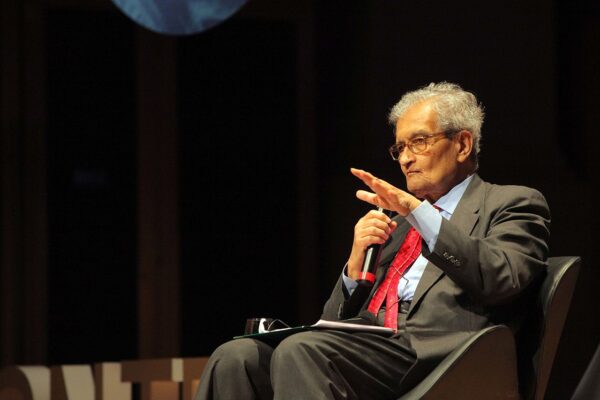By Ashok R. Chandran
The Hindu Business Line (Chennai)
HE IS AN INDIAN scientist who has hit global headlines repeatedly. In 2006, Pulickel Madhavapanicker Ajayan entered the Guinness Book for creating the world’s tiniest brush, its bristles thousand times finer than human hair. A few months later, Scientific American included him in its list of top-50 visionaries in research, policy and business. And last year, he was in the spotlight for developing a battery that can be rolled, printed like paper, and powered by sweat. The 45-year-old Professor of Materials Science at Rice University in Houston (US) is one of the world’s leading experts in nanotechnology.
Ajayan’s story begins in Kodungallur town in Kerala.
Born to a telephone technician and a Hindi teacher, Ajayan initially attended classes at a local government school. At the age of 12, he moved to Thiruvananthapuram to join Loyola School. ‘If I think about the influences that changed my life, I would say Loyola comes first. It made me realise that learning is the most exciting thing one can befriend’, says Ajayan.
And what a friend it has been! It took Ajayan to a gold-medal-winning B.Tech from the Institute of Technology at Banaras Hindu University, and to Northwestern in the US for a PhD. In 1991, when Sumio Iijima’s group discovered carbon nanotubes at the NEC labs in Japan, Ajayan was a post-doctoral fellow there. ‘I have been lucky. I have been at the right places at the right time in my career’, he says about the discovery that renewed worldwide interest in nanotechnology.
For Ajayan, carbon nanotubes thus became the field of research. The spirit of learning now took him to Europe. For a few years, Ajayan worked at the Universite Paris-sud at Orsay (France) and the Max Planck Institute in Stuttgart (Germany). In 1997, he crossed the Atlantic and settled in the US.
‘Each place has its characteristics, strengths and weaknesses. Japan is very good in terms of work ethics and resources but the system is quite hierarchical and you could lose motivation. Europe has a long history of sciences and it has outstanding places. But I think the US provides the best opportunity for foreign students/personnel with very little discrimination. The only problem with the US is that the pressure to perform is very high. The competition is extremely high.’
But Ajayan has thrived in that country. By gathering people from different backgrounds—physics, chemistry, materials science—he spurs creativity in his research team. ‘To be creative, it is important to make connections. This can happen when people with different backgrounds talk’, he says.
In the discussions with students and post-doctoral researchers, unexpected ideas spring up. ‘Discovering or creating new stuff is not normally sudden. It happens after a lot of thinking, discussions, collaboration and refinement’, he says. In other words, you won’t catch Ajayan running from a bathtub.
His wife Poornima and daughters Anakha and Ahi think otherwise. They feel that he is always working–even while eating at home or driving. Ajayan laughs and says, ‘I am always thinking about some interesting problem, or an experiment that could be done. There is no escape from this.’
Long days and nights in the lab? ‘Physically I am not there so much in the lab; the students and post-docs do most of the work’, says Ajayan, whose time is spent on the computer: writing grants, papers, looking at data, or preparing teaching notes. ‘This is what professors do these days. Whenever I get a chance I go to the lab, but I don’t get to do experiments myself; not anymore’, he says.
One of the most cited authors in nanotechnology, Ajayan is among the influential scientists of his generation. A nanotech evangelist (on National Public Radio, YouTube, he is everywhere), he believes that India should exploit nanotech opportunities in alternative energy and healthcare.
‘Countries should invest in areas that are important to them, their national security and the wellbeing of their population’, says Ajayan. ‘I think nanotech can do wonders in areas like solar energy and hydrogen energy. Nanotechnology could also have a huge impact on medicine, for example in cancer treatments and drug delivery’, he explains.
But, for the boy who befriended learning, education is top priority. ‘We need to build the educational infrastructure so that young people will be motivated to take up higher studies. Not just in the IT sector, but in all areas of science and technology.’




